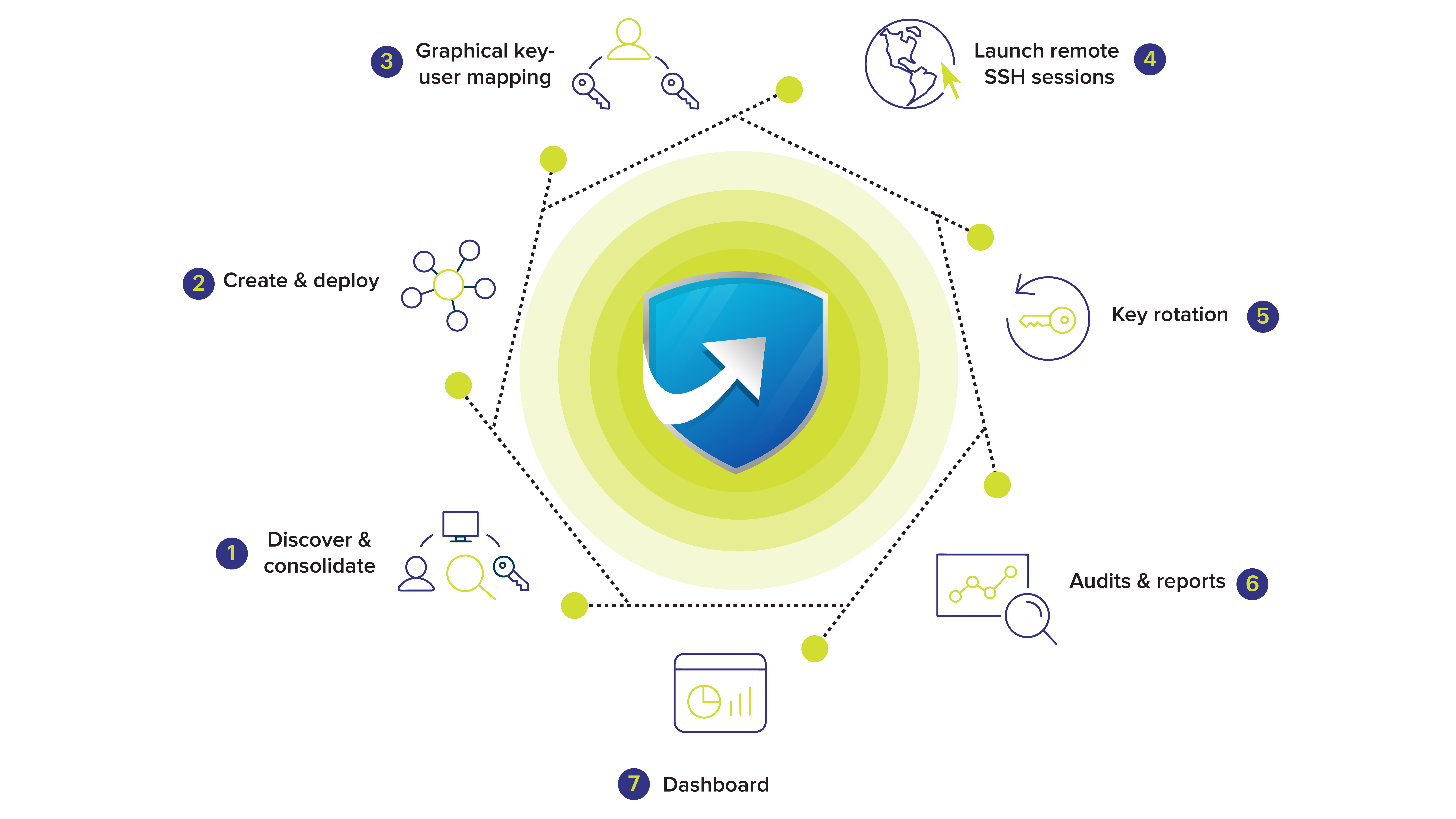For many large enterprises, thousands of user devices access the corporate network every day with hundreds of them requiring access to privileged systems for their day-to-day operations. For secure authentication of these devices, IT administrators create and distribute Secure Socket Layer (SSL) and Transport Layer Security (TLS) certificates that verify and validate the devices and encrypt the two-way communication.
This also means that IT administrators have to track hundreds of certificates every day, constantly monitor their usage, stay on top of certificate expirations, detect and remediate configuration vulnerabilities, and so on. Quite often, certificate creation is done in silos and administrators lack visibility over deployment patterns and certificate validity periods. On top of this, it's essential that strict access control mechanisms are put in place, allowing only selected personnel to raise and approve certificate requests to prevent proliferation.
Orchestrating the entire certificate life cycle management workflow manually is a daunting and error-prone approach. The ideal approach for enterprises is to deploy a certificate management solution that eliminates visibility issues, streamlines requests, automates workflows, and tracks the end-to-end life cycles of all certificates from a single interface.
PAM360 comes with a built-in certificate management module that imparts complete visibility and control over enterprise SSL and TLS certificate life cycle management. This allows IT administrators to discover, consolidate, create, deploy, renew, and manage digital keys and certificates alongside privileged accounts, facilitating tight, proactive control over the utilization of privileged access pathways within the enterprise network.

Discover SSL and TLS certificates across heterogeneous environments and endpoints
PAM360's built-in SSL and TLS discovery tool helps IT administrators perform network-based discoveries of all kinds of X.509 certificates deployed within the organization. This includes self-signed certificates, Active Directory user certificates, mail server certificates, certificates deployed to load balancers, certificates hosted in Amazon Web Services (AWS), and so on.
Certificate discovery can also be carried out in bulk either on demand or automatically at periodic intervals through creation of scheduled tasks. New certificates can be configured to be automatically added in PAM360's certificate repository as and when they are generated. This provides administrators with complete visibility over their SSL and TLS environments, allowing them to quickly identify and remediate rogue and invalid certificates within the network.
Centralize certificate deployment to target systems and applications
It's quite common for enterprises to source certificates from multiple certificate authorities (CAs) for their systems and applications. This results in administrators juggling between two or more vendor portals for management without much visibility.
PAM360's certificate inventory houses certificates of all kinds, regardless of the issuing CA, facilitating a central certificate deployment workflow without having to navigate between multiple interfaces. Administrators can also generate and deploy self-signed certificates from PAM360 for internal purposes, eliminating any unnecessary dependencies on intermediary teams.
Stay on top of certificate renewals through timely expiration alerts
SSL and TLS certificates deployed to systems and applications come with set expiration dates, which means they have to be renewed from time to time. Unforeseen certificate expirations result in service downtimes, which can affect productivity, hurt brand credibility, and even act as the launch point for security breaches in extreme cases.
Monitoring the validity periods of all the certificates within the organization is an enormous undertaking for IT administrators. PAM360 helps IT admins track certificate expirations via automated alerting through emails, SNMP traps, and syslog messages. Administrators can even initiate renewals, orchestrate the deployment of freshly acquired certificates, and track their usage — all from a single, unified interface.
Leverage out-of-the-box integrations with third-party CAs to track certificate life cycles from a single interface
Enterprise IT teams lack holistic visibility over certificate usage and validity periods, especially when multiple third-party CAs are involved in certificate provisioning. On top of this, the management portals offered by certificate vendors facilitate life cycle automation only for native certificates and do not extend support for other brands.
PAM360's certificate management module provides vendor-neutral certificate life cycle management — a combination of tightly integrated workflows that allows IT admins to source, consolidate, deploy, renew, and track the life cycles of certificates issued by a wide range of third-party CAs. The complete list of CAs integrated out-of-the-box with PAM360 can be found here.
Exclusively manage certificates from Microsoft Certificate Store and certificates issued by Microsoft Certificate Authority
To facilitate secure communication within internal applications and servers, enterprise IT teams generally set up in-house CAs such as Microsoft Certificate Authority and deploy the locally generated certificates to various nodal points within the network. Again, these certificates need to be constantly monitored and managed to avoid connection interruptions.
Managing internal CA certificates manually can be a challenge for IT admins, especially when done on a large scale. PAM360 provides dedicated workflows that help enterprise IT teams manage, automate, and orchestrate the management of certificates in Microsoft Certificate Store and certificates issued by Microsoft Certificate Authority without manual intervention.